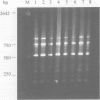Abstract
Control of Streptococcus suis infections and associated disease have proven to be a difficult challenge under most farm conditions. The objective of this study was to experimentally expose young pigs with a pathogenic strain of S. suis serotype 2 as a means of controlling the disease in a commercial swine farm. Prior to the start of the study, the pathogenic S. suis strain responsible for mortality in the farm was identified and used to experimentally inoculate baby piglets. Over a 3-week period, groups of pigs were selected (100 pigs/wk) and divided into 2 groups: control (50 pigs/week) and experimentally exposed (50 pigs/week). Pigs in the experimentally exposed group were inoculated at 5 d old by tonsillar swabbing with the pathogenic S. suis farm isolate. The effect of exposure with this pathogenic strain was evaluated during the nursery and finishing stages and was based on: morbidity (pigs with central nervous signs (CNS) and/or lameness), mortality and number of treatments required by pigs that had either CNS or lameness. The relative risk (RR) of acquiring disease due to S. suis infection was also calculated. Results showed that morbidity in the experimentally exposed groups was lower than in the control group and these results were statistically different (P = 0.006). Experimentally exposed pigs also showed a statistically significant reduction in lameness problems (P = 0.012), but not in CNS (P = 0.20) or mortality (P = 0.59). Pigs in the control group had an increased RR of 4.76, 8.77 and 2.7 for morbidity, to have lameness or to have CNS signs, respectively. In conclusion, experimental exposure of young pigs with the farm's pathogenic S. suis strain at a young age, had a positive effect in reducing clinical signs characteristics of S. suis infection. This method constitutes a novel approach to the control of S. suis infections in swine farms.
Full text
PDF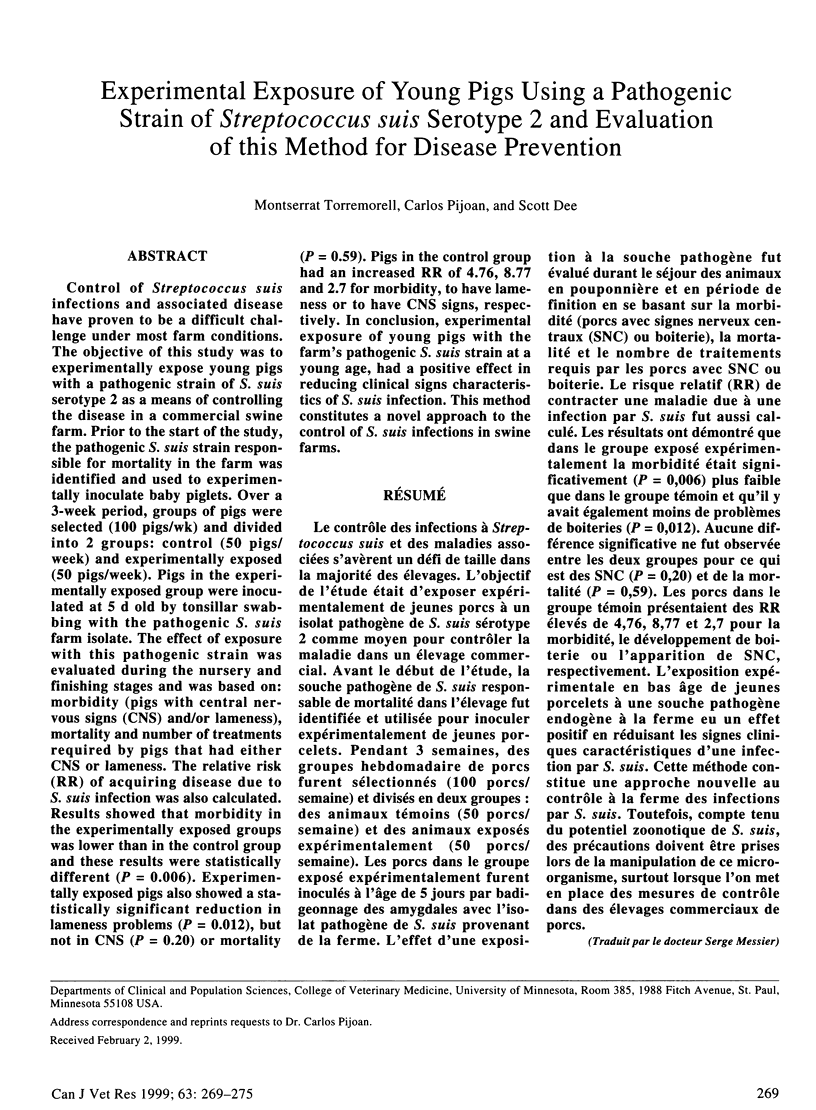
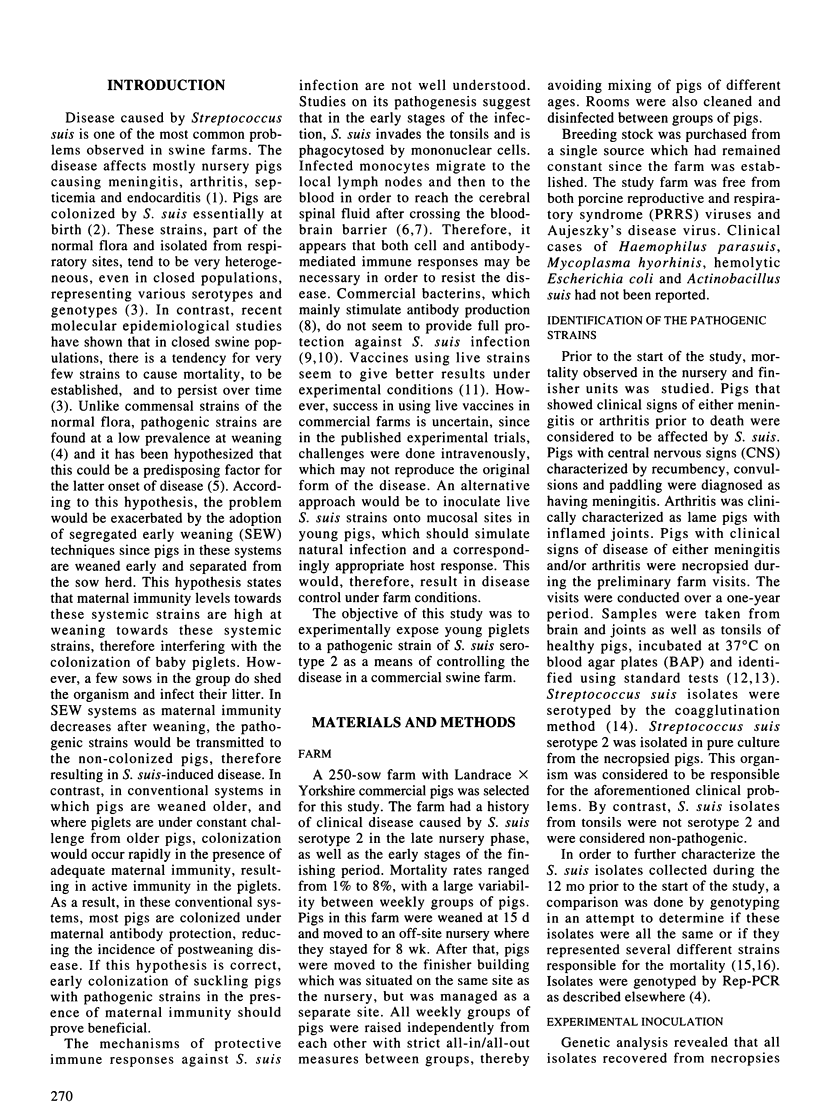
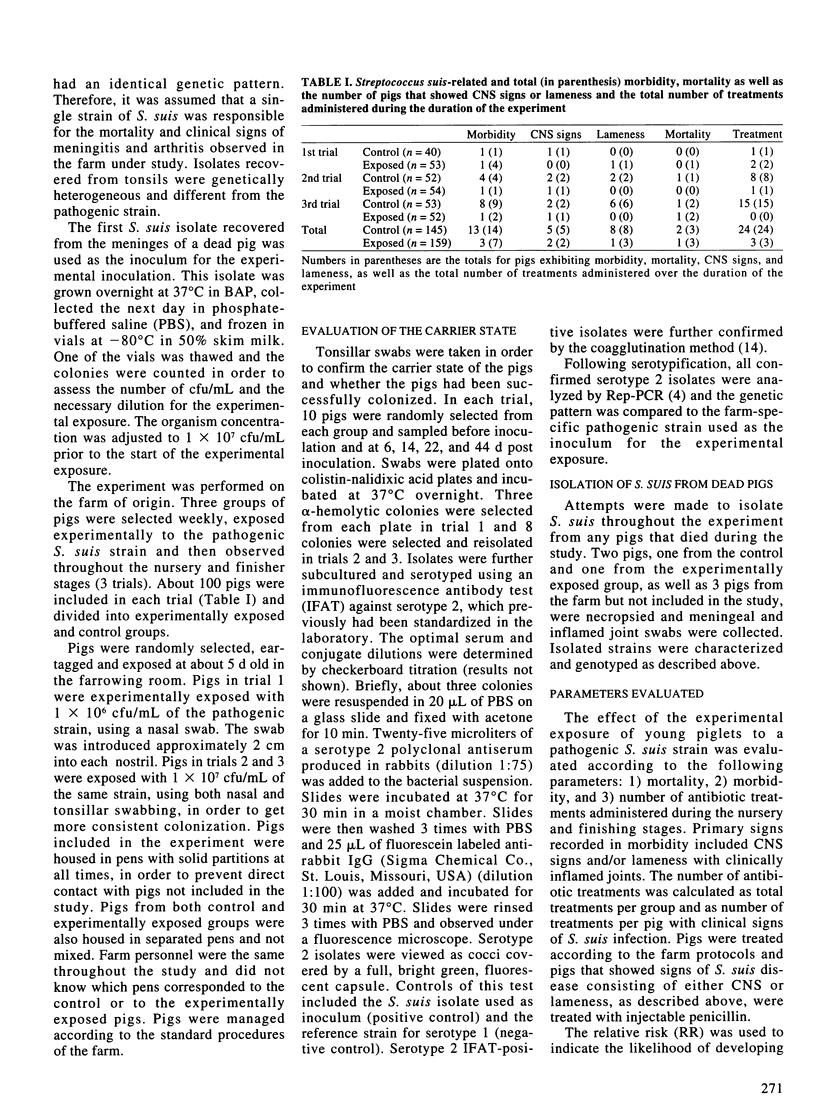
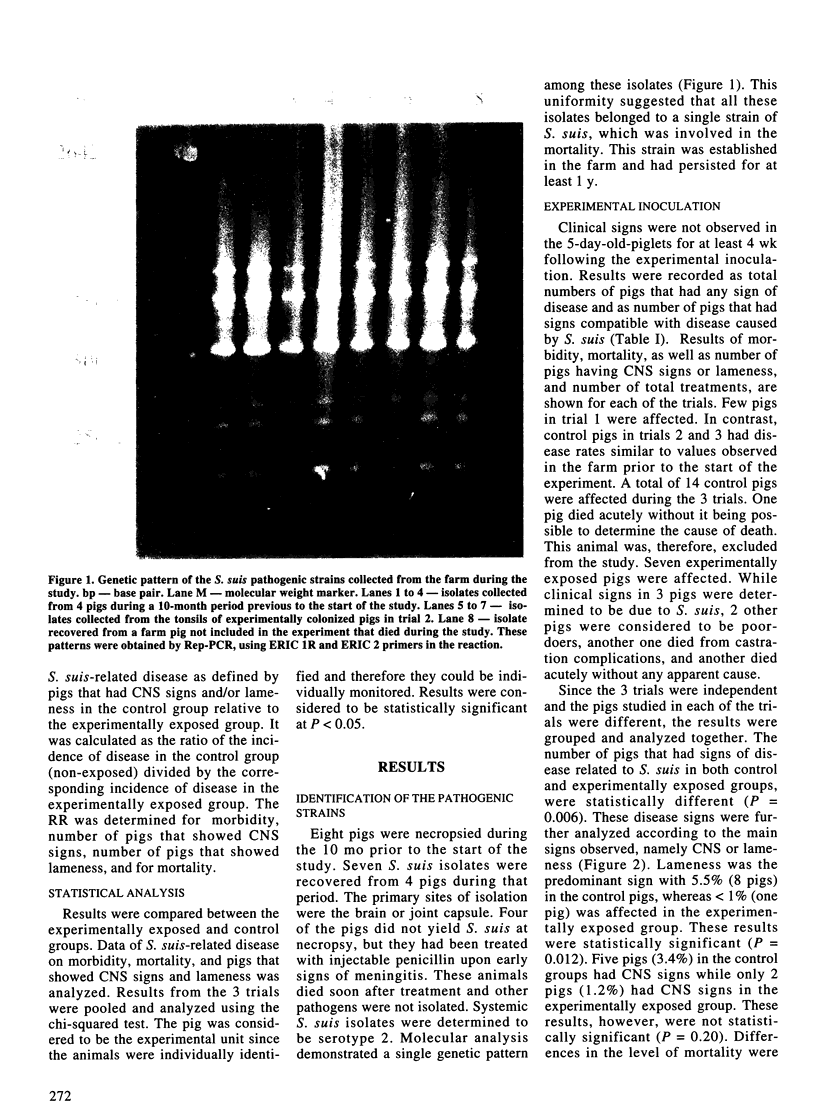
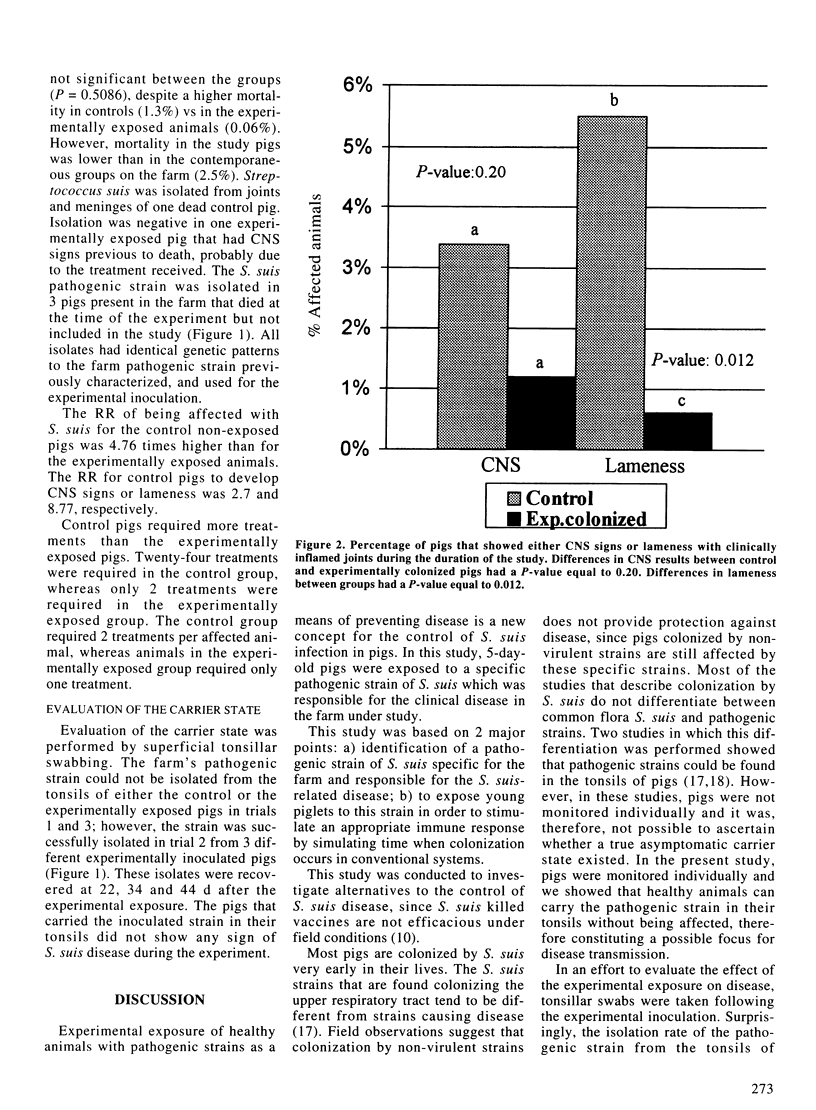

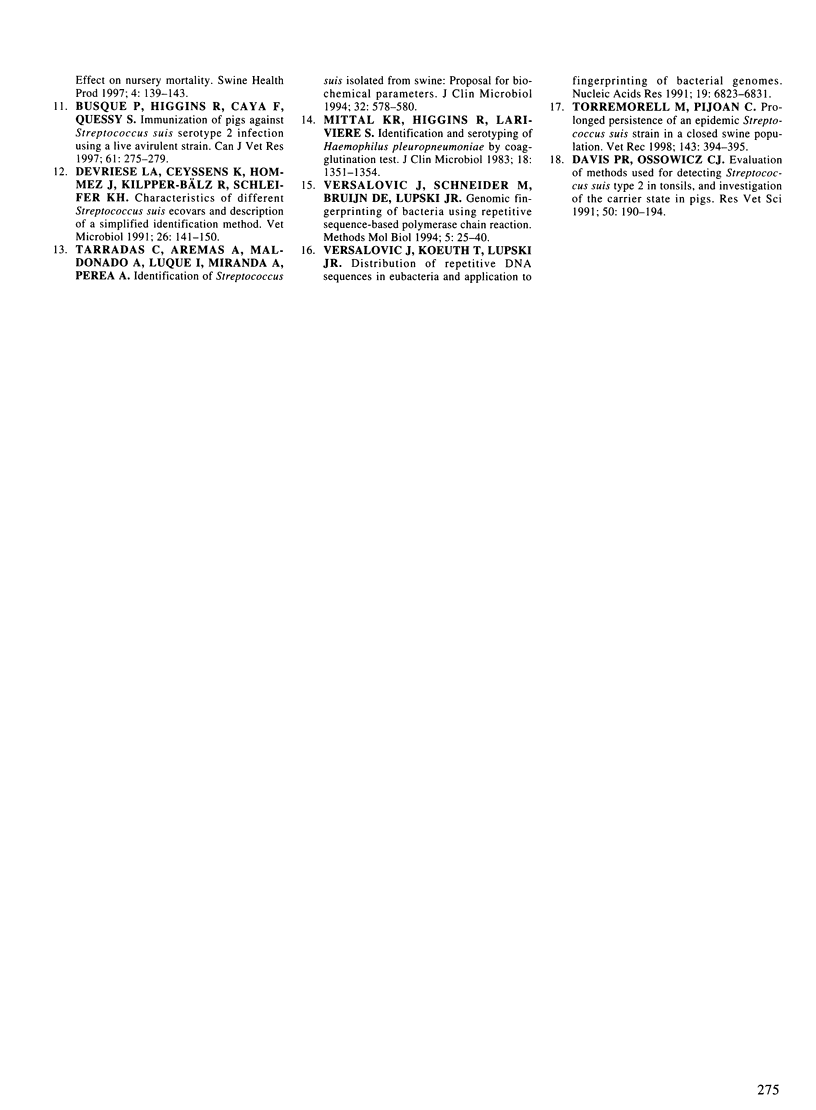
Images in this article
Selected References
These references are in PubMed. This may not be the complete list of references from this article.
- Busque P., Higgins R., Caya F., Quessy S. Immunization of pigs against Streptococcus suis serotype 2 infection using a live avirulent strain. Can J Vet Res. 1997 Oct;61(4):275–279. [PMC free article] [PubMed] [Google Scholar]
- Davies P. R., Ossowicz C. J. Evaluation of methods used for detecting Streptococcus suis type 2 in tonsils, and investigation of the carrier state in pigs. Res Vet Sci. 1991 Mar;50(2):190–194. doi: 10.1016/0034-5288(91)90104-v. [DOI] [PubMed] [Google Scholar]
- Devriese L. A., Ceyssens K., Hommez J., Kilpper-Bälz R., Schleifer K. H. Characteristics of different Streptococcus suis ecovars and description of a simplified identification method. Vet Microbiol. 1991 Jan;26(1-2):141–150. doi: 10.1016/0378-1135(91)90050-p. [DOI] [PubMed] [Google Scholar]
- Mittal K. R., Higgins R., Larivière S. Identification and serotyping of Haemophilus pleuropneumoniae by coagglutination test. J Clin Microbiol. 1983 Dec;18(6):1351–1354. doi: 10.1128/jcm.18.6.1351-1354.1983. [DOI] [PMC free article] [PubMed] [Google Scholar]
- Mogollon J. D., Pijoan C., Murtaugh M. P., Collins J. E., Cleary P. P. Identification of epidemic strains of Streptococcus suis by genomic fingerprinting. J Clin Microbiol. 1991 Apr;29(4):782–787. doi: 10.1128/jcm.29.4.782-787.1991. [DOI] [PMC free article] [PubMed] [Google Scholar]
- Tarradas C., Arenas A., Maldonado A., Luque I., Miranda A., Perea A. Identification of Streptococcus suis isolated from swine: proposal for biochemical parameters. J Clin Microbiol. 1994 Feb;32(2):578–580. doi: 10.1128/jcm.32.2.578-580.1994. [DOI] [PMC free article] [PubMed] [Google Scholar]
- Torremorell M., Calsamiglia M., Pijoan C. Colonization of suckling pigs by Streptococcus suis with particular reference to pathogenic serotype 2 strains. Can J Vet Res. 1998 Jan;62(1):21–26. [PMC free article] [PubMed] [Google Scholar]
- Torremorell M., Pijoan C. Prolonged persistence of an epidemic Streptococcus suis strain in a closed pig population. Vet Rec. 1998 Oct 3;143(14):394–395. doi: 10.1136/vr.143.14.394. [DOI] [PubMed] [Google Scholar]
- Versalovic J., Koeuth T., Lupski J. R. Distribution of repetitive DNA sequences in eubacteria and application to fingerprinting of bacterial genomes. Nucleic Acids Res. 1991 Dec 25;19(24):6823–6831. doi: 10.1093/nar/19.24.6823. [DOI] [PMC free article] [PubMed] [Google Scholar]
- Williams A. E., Blakemore W. F. Pathogenesis of meningitis caused by Streptococcus suis type 2. J Infect Dis. 1990 Aug;162(2):474–481. doi: 10.1093/infdis/162.2.474. [DOI] [PubMed] [Google Scholar]
- Williams A. E. Relationship between intracellular survival in macrophages and pathogenicity of Streptococcus suis type 2 isolates. Microb Pathog. 1990 Mar;8(3):189–196. doi: 10.1016/0882-4010(90)90046-s. [DOI] [PubMed] [Google Scholar]



